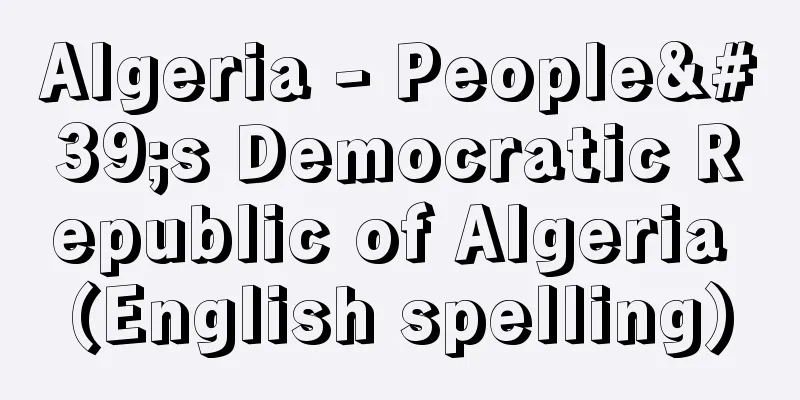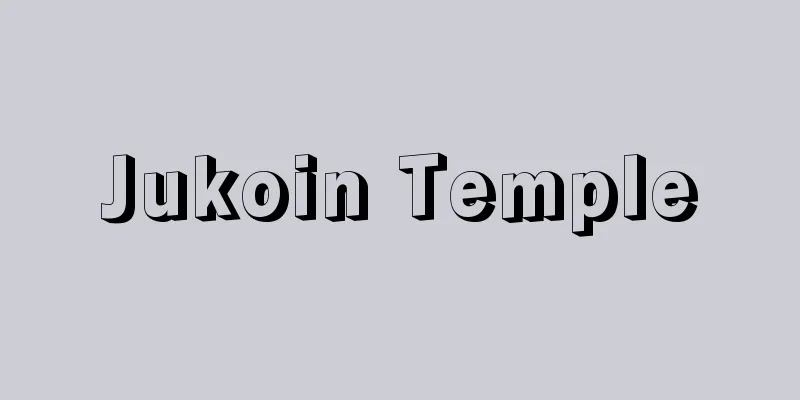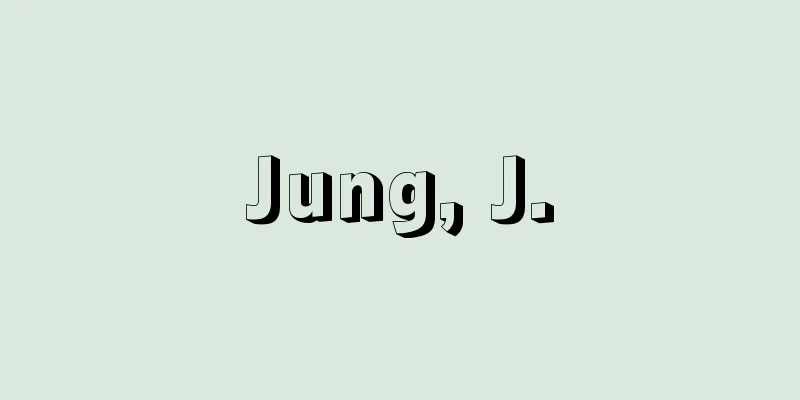Algeria - People's Democratic Republic of Algeria (English spelling)

|
A country in the northwest of the African continent, facing the Mediterranean Sea. Its official name is the People's Democratic Republic of Algeria (Jumhūrīya jazā'irīya dimoqratīya wa shābīya). In its official language, regular Arabic, it is called al-Jazā'ir or El Djazaïr, and shares the same name as its capital, Algiers (population 3.35 million in 2007). It is located in the middle of the three Maghreb countries at the western edge of the Arab world, sandwiched between Tunisia to the east and Morocco to the west. The country spreads out like a huge wedge driven into the Sahara Desert to the south, and borders Libya, Niger, Mali, Mauritania, and Western Sahara to the southeast and southwest. With an area of 2,381,741 square kilometers, it is the second largest country in Africa after Sudan. The population is 34,459,729 (2008 census provisional figure), 33,481,000 (2006 estimate), and 34,895,000 (2009 estimate), with 95% concentrated in an area 250-350 km wide from the Mediterranean coast (14% of the country's land area). During the French colonial period, the country exported wine and other agricultural products, but after independence in 1962, it promoted heavy chemical industrialization based on Saharan oil and natural gas, aiming to become a "Mediterranean Japan," and factories with the latest equipment can be seen in cities along the Mediterranean coast. [Hiroshi Fujii] NatureterrainThe topography is roughly divided into the Atlas Mountains region and the Sahara region. The mountain range region was created in the Paleogene period (65 million years ago) when the African plate (rock) moving north collided with the Eurasian plate, causing folding. The Atlas Mountains region consists of four regions, from north to south: the narrow coastal plain, the steep Tell Atlas mountain range at an altitude of 1,000 to 2,000 meters, the Atlas Plateau at an altitude of 500 meters, and the relatively gentle Sahara-Atlas mountain range at an altitude of 1,000 to 2,000 meters. The Euro-Asia earthquake belt runs through the Tell Atlas Mountains, and in 1980, a magnitude 7.5 earthquake occurred in El Asnam (now Esh Cherif), causing great damage. In addition, a magnitude 6.7 earthquake occurred in Boumerdes Governorate in May 2003, killing more than 2,000 people. The Sahara region as a whole is a plateau with an average elevation of 500 meters. The exception is the Ahaggar Mountains in the south, which reach an elevation of 3,000 meters and are an uplifted shield with rocky mountains that have been eroded by wind, creating strange sights. There are four groups of sand dunes called ergs, including the Great Eastern Sand Dunes. The elevation of the Merril Salt Lake at the northeastern end is below sea level. [Hiroshi Fujii] climateRainfall is concentrated in winter, and is most abundant along the Mediterranean coast, decreasing dramatically as you move south. The climate classification corresponds well to the topography, with the coastal plains and the Tell Atlas region having a Mediterranean climate, the Atlas Plateau to the Sahara-Atlas Mountains having a steppe climate, and the area south of the southern edge of the Sahara-Atlas Mountains, where the annual rainfall line of 200 mm runs, having a desert climate. All of these regions have dry summers with high temperatures and extremely hot weather. For this reason, building walls are thick. Winters are mild along the Mediterranean coast, but temperatures drop in the Atlas Mountains and snow accumulates in the high mountains. In the eastern Tell Atlas Mountains, such as the Kabylie Mountains, annual rainfall exceeds 1000 mm in some places, but overall precipitation is low and there are no large rivers, so securing water for agriculture, industry, and cities is a constant problem. Desertification is progressing from the Sahara to the Atlas Mountains and the Atlas Plateau, and the government is implementing a large-scale reforestation program called the "Green Wall Project" (Barrage Vert) to stop this. In addition, trees are planted on both sides of the road to prevent sand from accumulating on the main road. The hot, sandy wind called the "Sirocco" that blows out of the Sahara from spring to early summer is famous as a seasonal wind. [Hiroshi Fujii] GeographyAlgeria is divided into three regions: the Mediterranean coastal region, the steppe region, and the Sahara region. The Mediterranean coastal region consists of the coastal plain and the Tell Atlas region, and has a Mediterranean climate. It is the region with the most favorable natural conditions. During the colonial period, European colonists settled in this region in large numbers, operating farms cultivating grapes and citrus fruits, and establishing European towns in each town. After independence in 1962, many of the self-managed farms that were reorganized from European farms were distributed in this region, and modern mechanized agriculture was developed. In addition, the heavy chemical industrialization policy after independence led to the development of coastal industrial cities such as Annaba, Bijaya, Skikda, Algiers, Arzout, and Oran. The capital, Algiers, continues to be the political, economic, and cultural center of the country, and the population continues to concentrate there, and the Mitijja plain behind it has been transformed from an agricultural area into a residential urban area and a suburban industrial urban area. In the inland departmental capitals of Constantine, Sétif, Médéa and Ech-Cherif, factories and housing are being built as part of a regional industrialization policy, while in traditional agricultural regions such as the Kabylie mountains, many workers are fleeing to cities and France. The steppe region includes the Atlas Plateau and the Sahara-Atlas Mountains, and has a low annual rainfall of 200-400 mm. Agriculture combines the cultivation of grains such as wheat with livestock farming such as sheep. In years without rain, semi-nomadic livestock farming is also practiced, with the animals moving around in search of grass. With the exception of a few modern farms, the techniques used are traditional, and the region is poor. There are plans to develop Lake Hodna to promote irrigated agriculture. Industrialization is underway in the provincial capitals of Djelfa and Batna. The Sahara region is the Sahara Desert south of the southern edge of the Sahara-Atlas Mountains, and the inhabitants live in oases at the foot of the mountains, at the foot of the plateau, and in the valleys where water is available. In the oases, they cultivate date palms, vegetables, fruits, etc. with water from springs and underground waterways called fogaras. Many of the farmers are Black Africans who were once brought from the south as slaves, and are extremely poor because of the high cost of water. Nomads who live around the oases travel to the northern agricultural areas in summer with their livestock after the harvest, and return to the oases in winter where there is little rain and grass grows. Oases, which function as transportation hubs and markets, have urban areas and large populations. After World War II, oil and natural gas were developed, and separation and dispatch factories were established in Hassi (Hassi)-Messaoud and Hassi (Hassi)-Rumel, where engineers and workers have settled. Urbanization and industrialization are also progressing in the Ghardaia Oasis and Golea, known for their beautiful scenery. The French Saharan nuclear explosion test site is located in Reganou in the center, where France's first nuclear test was conducted in 1960. Even after independence in 1962, Reganou was the only area under French direct control, and nuclear testing continued there until 1967. After that, with the withdrawal of French troops, the test site was transferred to Algeria and became a restricted area, but the problem of radioactive contamination remains. [Hiroshi Fujii] historyUnlike the indigenous peoples who left behind Paleolithic and prehistoric ruins such as the rock paintings of Tassili n'Ajjer, the ancient inhabitants of the Maghreb region, which has a direct connection to the present day, were Berbers, a Mediterranean race who engaged in agriculture and livestock farming. With the development of navigation technology, the ancient Maghreb region was successively ruled by foreign tribes such as the Phoenicians and Vandals who came from the northern and eastern shores of the Mediterranean. However, the rulers only controlled coastal cities and key transportation points inland, and the political and economic organizations of each Berber tribe were maintained. The Middle Ages was a time of Arabization and Islamization due to Arab invasions. Arab armies invaded the Maghreb region in the mid-7th century to expand the Islamic region, and reached Morocco in the 8th century. The Berbers resisted, but the Arab armies treated those who converted equally, so many converted to Islam, the Arabic language and Islamic culture also spread, and intermarriage progressed. Even after accepting Islam, some tribes kept the Berber language and culture, and this can still be seen today in the Kabylie, Aures (Aurès), M'zab (Ghardaiya), and Ahaggar regions. In the early 16th century, the Turkish army, which had driven the Spanish troops off the coast of Algeria, remained there and made the area a dependency of the Ottoman Empire. The territories of the various Turkish governors of this period determined the current borders along the coast, and the framework of the Algerian state was formed. Algiers, where the governor's office was located, was established as the capital. Under the rule of the Ottoman Empire, the organization of the various tribes was maintained, while the real power in governing the dependency's politics was held by the Turkish army and navy (pirate) officers stationed there. In 1830, under the rule of Charles X, France landed an expeditionary force here to suppress the Turkish navy (pirates) that was ravaging the Mediterranean Sea and to benefit the great merchants of Marseille, forcing the surrender of the Turkish governor and occupying Algiers. This was the first step in France's colonial rule of Algeria. During the 132 years of colonial rule that followed, Algerians' national consciousness was formed for the first time amid resistance to French rule and the disintegration of traditional tribal society. Even after the surrender of the Turkish governor, Algerians continued to resist strongly, and the uprisings of Abdel Kadir (Kader) and Mokhtar are well known. In Algeria under the French colony, the success of grape cultivation in the 1870s led to the development of farms cultivating citrus fruits, vegetables, and other commercial crops for the European market. Iron and zinc mines were also developed. In this way, a colonial economy was formed that exported primary products and imported industrial products. With their land taken away and their traditional society dismantled, Algerian peasants had no choice but to move to the cities or work as farm laborers. At the end of the colonial period, there were 7 million Algerians and 1 million European colonists. Although the French government called it an "assimilation policy," there was a huge discrimination between the two groups in terms of status and income. During World War II, after France's defeat, the city temporarily came under the control of the Vichy regime, but with the Allied occupation of North Africa, it became the base of de Gaulle's anti-German resistance. After World War II, other French colonies gained independence one after another, but Algeria's demand for independence was not accepted, and oppression such as the Sétif massacre in 1945 continued. Independence activists formed the Algerian National Liberation Front (FLN) and called for people to join the National Liberation Army (ALN). On November 1, 1954, the FLN launched an armed uprising all over the country, starting a war of independence that lasted seven years and four months. The French government deployed 500,000 troops and inflicted harsh oppression, but this only rallied the people to the FLN. In order to break out of the quagmire, de Gaulle reappeared in France in 1958, and negotiations were carried out with the Provisional Government of the Republic of Algeria (established by the FLN in September 1958) under a policy of recognizing the right of self-determination of the Algerian people. In March 1962, the Evian Agreement was concluded, which called for a ceasefire and independence. Algeria achieved independence on July 3, 1962. In September of the same year, elections for the Constituent Assembly were held, and the Assembly proclaimed the establishment of the People's Democratic Republic. In September 1963, a draft constitution was adopted, and Ben Bella was elected as the first president. At the FLN Congress in April of the following year, 1964, a new platform oriented towards socialism, the Algiers Charter, was adopted. However, on June 19, 1965, a coup d'état was carried out by Colonel Boumediene, Deputy Prime Minister and Minister of Defense, and Ben Bella was ousted and imprisoned. Boumediene suspended the constitution, made the Revolutionary Council the highest organ, and appointed himself as its chairman. Ben Bella nationalized farmland owned by Europeans, but Boumediene also continued the socialist line, nationalizing foreign companies one after another, and promoting heavy chemical industrialization by state-run companies, placing emphasis on administrators who had graduated from universities and technical schools. In 1971, he also launched an "agricultural revolution" to reallocate farmland owned by Algerians. In 1976, a new constitution was adopted and democratization took place, including the holding of presidential elections, and the following year, in 1977, parliamentary elections were held. Boumediene, who turned Algeria, whose economy was on the brink of collapse due to the war of independence and the withdrawal of the French, into a "middle-income nation," was elected president with overwhelming support from the people, but he died of illness in 1978 and was succeeded by Colonel al-Shādhili Benjadid (1929-2012), Chief of Staff. In the 1980s, oil prices fell, and the nationalization and heavy chemical industrialization policies suffered setbacks, leaving the country plagued by huge accumulated debts. Unemployment, inflation, and shortages of daily necessities occurred, and public discontent grew with the one-party dictatorship of the FLN, which led this policy. Islamist movement organizations responded to this growing discontent, winning more than 70% of the votes in various elections held in the early 1990s. Sensing a sense of crisis, the government and military adopted strong repressive measures, and the Islamist movement organizations turned to terrorist activities from 1992 onwards. These terrorist attacks claimed the lives of tens of thousands of people, including foreigners, and at one point led to a situation that was called the "Second Algerian War." [Hiroshi Fujii] PoliticsThe Islamist movement, the Islamic Salvation Front (FIS), won a landslide victory in the first local elections since the transition to a multiparty system in June 1990. After the FIS also won a majority in the first round of the National Assembly elections in December 1991, the military deposed President Shazili, seized power, declared the first round invalid, and canceled the second round in January 1992. In January 1992, the military made the National High Council the highest authority, with Mohamed Boudiaf (1919-1992) as chairman, and declared a state of emergency throughout the country. In June of the same year, Boudiaf was assassinated, and Ali Kafi (1928-2013) became the new chairman. However, the military claimed that this military government was a transitional measure, and in January 1994, they dissolved the council and appointed former general Liamine Zeroual (1941- ) as president. In November 1995, four candidates ran in the presidential election, and Zelwar won with 61% of the votes, and was legally appointed to a five-year term. In 1999, Zelwar resigned as president, and in the April presidential election of the same year, former foreign minister Abdelaziz Bouteflika (1937-2021) was elected. Bouteflika was re-elected president in April 2004. Furthermore, a constitutional amendment in November 2008 abolished the presidential term limit, allowing Bouteflika to be re-elected for a second term. In April 2009, Bouteflika was re-elected for a third term, maintaining his long-term rule. Meanwhile, terrorist activities, which have continued since 1992, have become increasingly intense, and in 1996 conflict between the FIS's armed wing, the Islamic Salvation Army (AIS), and the Armed Islamic Group (GIA), came to the surface, resulting in repeated bombings, including the kidnapping and murder of seven French monks. In 1997, there were a series of village attacks and massacres, and the number of terrorist victims is said to have reached tens of thousands. In 2003, Islamist extremists also took tourists hostage. President Bouteflika has been actively working to combat terrorism, including a reconciliatory policy of granting amnesty to terrorist organizations that disarm, but this has not yet succeeded in curbing terrorist activities. A constitutional amendment in November 1996 adopted a bicameral parliamentary system consisting of the National Council (upper house) and the National Assembly (lower house). National Assembly elections were held in June 1997, with the presidential supporters, the National Rally for Democracy (RND) and the FLN, winning a majority of the 380 seats. Senate elections were also held in December of the same year. The ruling coalition of the FLN, RND and other parties also won landslide victories in two National Assembly elections, in May 2002 and May 2007. The prime minister is appointed by the president and forms a cabinet. The government has 26 ministries and 5 agencies. The army, navy and air force have a total of 147,000 troops, with 150,000 in reserve. [Hiroshi Fujii] Economy and IndustryEconomic challenges after independence included resolving the economy that had developed during the colonial period, which relied on the export of grapes, citrus fruits, and mineral products, the significant disparities between the modern and traditional sectors and between inland and coastal areas, and the large number of unemployed people and people working overseas. During the Boumediene era, using revenues from oil and natural gas exports as a foundation, loans and technology from developed countries were introduced, and industrialization was pursued through two five-year plans. As a result, factories were built on the coast and in rural areas, and the country became a "middle-income country," but at the same time the gap between agriculture and industry widened, and the number of unemployed people and labor migrants did not decrease. After 1980, the price of oil and natural gas fell, the operating rate of the factories that had been built was low, and the heavy chemical industrialization policy collapsed. Daily necessities were also in short supply, and riots broke out across the country in October 1988. In 1994, the country was unable to repay its accumulated debts, and accepted a structural adjustment plan from the International Monetary Fund (IMF) and the World Bank, which focused on privatization, currency devaluation, and subsidy reduction. In order to make the most of its abundant oil and natural gas, 49% of the country was opened to foreign companies for development, and an undersea gas pipeline to Spain, which was completed at the end of 1996, was used to increase supplies to European countries. The IMF structural adjustment plan was completed as scheduled in 1998, and the economy is currently being rebuilt through the reorganization and privatization of state-run companies, the shift to a market economy, and the attraction of foreign capital. Whether or not the country will join the European Union (EU) is also a key to its economic development, and in 2002, the country signed an Association Agreement with the EU. [Hiroshi Fujii] resourceThe country's oil reserves, the basis of industrialization, are 1.14 billion kiloliters (2007), and annual production is 63.87 million tons (2007), of which 85% is exported. The country has oil fields in Hassi, Messaoud, Etxere, etc., and although a pipeline of more than 500 kilometers is needed to reach the Mediterranean coast, it is light oil and is close to Europe, which gives it an advantage. The country has natural gas reserves of 4.5 trillion cubic meters, making it one of the largest in the world. There is a large gas field in Hassi and Rumel, which is sent to the coast, liquefied, and exported. In 1983, an undersea gas pipeline was completed to Italy, and in 1996 to Spain. Production is carried out by a foreign company in which the government has a 51% stake, and transportation and sales are carried out by the state-run company Sonatrach, and development has been progressing in cooperation with foreign companies since 1991. Other underground resources include iron ore (Wenza, etc.), phosphate ore (Jebel Onk), zinc, and lead. [Hiroshi Fujii] AgricultureAfter independence, the ownership of farmland was classified into the socialist sector, the agricultural revolution sector, and the private sector. The first two were the nationalization of farms owned by Europeans and large landowners, and reorganization into state farms (self-managed farms) and cooperative farms, accounting for 40% of the total cultivated land area. The private sector was owned by Algerian large, medium and small farmers. At state and cooperative farms, wages were fixed and the government controlled sales, so farmers' motivation to work decreased and both the quality and quantity of agricultural products declined. During the process of industrialization, farm workers also moved to the cities. Food self-sufficiency also fell, and food imports increased. In 1987, the socialist sector and the agricultural revolution sector were dissolved and divided into more than 30,000 individual farms (EAI) and collectively managed farms (EAC). Most of the socialist sector has also been privatized. In this country, where the living limit per household is 10 hectares, the private sector is dominated by small-scale farms with an average of 7 hectares, but medium-sized farms with over 50 hectares and large farms with over 100 hectares are modernized and have high incomes. The main crops cultivated are wheat, barley, grapes, citrus fruits, vegetables, industrial crops, and dates, but grapes, which have no domestic demand, are being converted to wheat, and the agricultural population was 3 million in 2007. There is a tradition of nomads, and efforts are also being made in livestock and dairy farming. Livestock statistics for 2007 showed 19.85 million sheep, 3.37 million goats, 1.66 million cattle, 230,000 donkeys, and 290,000 camels. [Hiroshi Fujii] IndustryOil and natural gas production account for a large proportion of gross domestic product (GDP), with industrial production at around 10%. The main industries are heavy chemical industries such as steel, machinery, electrical equipment, and petrochemicals, and are located in coastal cities. Although the country has the latest facilities, low operating rates are an issue. Regional industrialization has led to the establishment of factories around each prefectural capital that employ relatively large numbers of people, such as textiles, plastics, cement, building materials, leather, and food factories. Most companies were run under the one state-owned company per industry model, but privatization is currently underway. [Hiroshi Fujii] TradeDespite exports of oil and natural gas, the trade balance has continued to run a large deficit due to capital investment in industrialization and food imports. Exports of oil and natural gas accounted for 97.9% of total exports (2006). The main import partners are France (20.8%), Italy, China, Germany, and the United States, while the main export partners are the United States (27.2%), Italy, Spain, France, and Canada. The relationship with France, the former colonial power, is strong. [Hiroshi Fujii] FinanceDue to its reliance on foreign borrowing, debt repayments increased, but as a result of structural adjustment measures and rising oil prices, the total accumulated debt fell to $4 billion in 2007. [Hiroshi Fujii] trafficMost of the 4,017 km of railway was built during the colonial period and is operated by the national railway company. Road construction continued after independence, with particular emphasis on the construction of the Trans-Saharan Highway, which was completed in 1978. As of 2010, a Japanese company was building the East-West Expressway connecting Morocco and Tunisia. There are more than 20 airports in Morocco, including the main international airports of Houari Boumediene in Algiers, Oran, Annaba, and Constantine, with many routes to various cities in France. The national company Air Algerie has a monopoly on domestic routes. The main ports are Algiers, Arzu, Oran, and Annaba. There are regular passenger routes from each port to Marseille. [Hiroshi Fujii] societyThe indigenous people were Berbers, and Arabs came after the 7th century. As a result of intermarriage, Islamization, and Arabization, the only thing that distinguishes Berbers today is that they can speak a Berber language. Berbers make up 19% of the population, and are found mainly in the regions of Kabylie, Aurès (Aurès), Ghardaia, and Ahaggar, but many also live in large cities. They feel a sense of crisis about the recent Arabization movement. African people live as farmers in the Saharan oases. The official language is regular Arabic, but during the colonial period, French education was forced and the use of Arabic was prohibited, so most people use both languages interchangeably. After independence, efforts have been focused on regular Arabic education. In recent years, there has been a growing demand for English education and for the Algerian dialect of Arabic to be made the national language. The estimated population in mid-1995 was 28.55 million, but in the 1998 census it was 29.1 million, and in the 2008 census it was 33.46 million. In addition, there are 950,000 labor migrants living abroad and 415,000 nomads. The birth rate is 2.8%, the death rate 0.5%, and the natural increase rate is high at 2.3%. In terms of the population by age group, those aged 0-24 account for 59% and the increasing demand for education, employment, food, housing, etc. is a major problem. The rise in oil prices since the 1990s has strengthened the country's finances, and the construction of detached houses and high-rise apartments has progressed in large cities and regional towns, and the housing situation is improving. After independence, efforts were made to spread compulsory education, and the literacy rate rose from 20% to 67% (1999) and 75% (2007). In secondary and higher education, emphasis is placed on technical education in connection with industrialization. Islam (Sunni sect) is the state religion. After independence, the observance of religious precepts was strengthened due to its connection with nationalism. Medical care is free, and other social security systems are also advanced. The General Confederation of Workers (UGTA) is particularly strong, and worker protection is at a high level. [Hiroshi Fujii] cultureThe underlying cultures are Berber, Arab-Islamic and French cultures, but Arab-Islamic culture since the 7th century has been the foundation of the Algerian people in both thought and language. However, French culture has been at the center of modernization and supports various systems such as politics, economy and education, so French culture currently has a large influence on daily life. Since independence, literature and films have also been released in French. In terms of language, Berber has been made one of the languages that make up the national language, and a movement to Arabize it is underway, but this has drawn resistance from those who protect Berber culture. Much of the literature and film is based on the war for independence and the tenacious way of life of the Berber people in their natural environment. The national character is proud, strong-willed and assertive. Although it was closed off due to the socialist system and terrorism, it has started to make efforts to attract foreign tourists. It has wonderful tourist resources, and seven of its sites are registered as UNESCO World Heritage Sites: "Beni Hammad Fort", "M'zab Valley", "Djemila", "Tipasa", "Timgad", "Kasbah of Algiers" (all cultural heritage sites), and "Tassili n'Ajjer" (mixed heritage site). [Hiroshi Fujii] Relations with JapanDuring the war of independence, Japanese volunteers provided medical aid to the FLN, which led to close friendly relations between the two countries, and they exchanged ambassadors soon after independence. In terms of economic ties, Algeria imports industrial products from Japan and exports natural gas and crude oil. Japan's trust in its technology has led to many Japanese plant exports, and Algeria was Japan's number one plant export destination in 1977 (Showa 52). Japan also cooperates with Algeria on a wide range of issues, including the preservation plan for the Tassili rock art, which is registered as a World Heritage Site. President Bouteflika visited Japan in 2000 (Heisei 12), 2004, and 2008. [Hiroshi Fujii] "The Algerian Revolution" by Tan Tokusaburo (1972, Tonoe Shoin) ▽ "Algerian Socialism and Self-Managed Farms" by Miyaji Kazuo (1978, Institute of Developing Economies) ▽ "Modern African History 5: North Africa" by Miyaji Kazuo (1978, Yamakawa Publishing) ▽ "A Geographical Study of Algerian Decolonization" by Fujii Hiroshi (1982, Kumamoto University of Commerce, Institute of Overseas Affairs) ▽ "JETRO Trade Market Series: Algeria" edited by the Japan External Trade Organization (1987, published by the Japan External Trade Organization) ▽ "Algeria in the Storm" by Juan Goitisolo, translated by Yamamichi Yoshiko (1999, Misuzu Shobo) ▽ "62 Chapters to Understand Algeria" edited by Watashi Masatoshi (2009, Akashi Shoten) ▽ "Modern and Contemporary History of Algeria" by Charles-Robert Argelon, translated by Masatoshi Iiichi and Setsuko Nakajima (Hakusuisha Bunko Quessej) [References] | | | | | | | | | | | | | | | | | | | [Additional resources] |"> Algeria flag ©Shogakukan Illustration/Shogakukan Creative "> Algeria Location Map A mountainous region in the central Sahara Desert. Known for the discovery of numerous rock paintings. World Heritage Site "Tassili n'Ajjer" (Algeria, registered in 1982) Algeria ©Shogakukan "> Tassili Source: Shogakukan Encyclopedia Nipponica About Encyclopedia Nipponica Information | Legend |
|
アフリカ大陸北西部、地中海に面する国。正称はアルジェリア民主人民共和国Jumhūrīya jazā'irīya dimoqratīya wa shābīya。公用語である正則アラビア語ではアル・ジャザイルal-Jazā'ir、El Djazaïrといい、首都アルジェ(人口335万。2007年)と同名である。アラブ世界の西の果てマグレブ三国の真ん中に位置し、東のチュニジア、西のモロッコに挟まれている。国土は南のサハラ砂漠に巨大なくさびを打ち込んだような形で大きく広がり、南東から南西にかけてリビア、ニジェール、マリ、モーリタニア、西サハラと国境を接している。面積は238万1741平方キロメートルで、アフリカ大陸ではスーダンに次ぎ二番目に広い国である。人口は3445万9729(2008年センサス暫定値)、3348万1000(2006年推計)、3489万5000(2009年推計)で、その95%は地中海沿岸から250~350キロメートル幅の地域(国土の14%)に集中している。フランス植民地時代はぶどう酒など農産物の輸出国であったが、1962年の独立後は、サハラの石油、天然ガスをもとに重化学工業化を進め、「地中海の日本」を目ざし、地中海沿岸諸都市には最新設備の工場がみられる。 [藤井宏志] 自然地形地形は大きくアトラス山脈地域とサハラ地域とに分けられる。山脈地域は古第三紀(6500万年前)に北上するアフリカプレート(岩盤)がユーラシアプレートに衝突し褶曲(しゅうきょく)が生じたものである。アトラス山脈地域は、狭い沿岸平野、標高1000~2000メートルの急峻(きゅうしゅん)な山地列よりなるテル・アトラス山脈、標高500メートルのアトラス高原、標高1000~2000メートルの比較的なだらかなサハラ・アトラス山脈の四つが北から順に並んでいる。テル・アトラス山脈には欧亜地震帯が走り、1980年にエル・アスナム(現、エシュ・シェリフ)でマグニチュード7.5の地震があり大きな被害を生じた。さらに、2003年5月にもブメルデス県でマグニチュード6.7の地震があり、2000人以上の死者がでた。サハラ地域は全体として平均標高500メートルの高原である。例外的に標高3000メートルに及ぶ南部のアハガル山地は、隆起楯状(たてじょう)地で風蝕(ふうしょく)により奇観を呈する岩山がある。エルグとよばれる砂丘群は、東部大砂丘群など4か所にある。北東端にあるメルリル塩湖の標高は海面以下である。 [藤井宏志] 気候降雨は冬季に集中しており、地中海沿岸に多く、南下するにつれ極端に少なくなる。気候区分は地形によく対応し、沿岸平野とテル・アトラス地域が地中海式気候、アトラス高原からサハラ・アトラス山脈までがステップ気候、年降水量200ミリメートルの線が走るサハラ・アトラス山脈南縁より南が砂漠気候である。いずれの地域も夏は乾燥し、気温も高く厳しい暑さとなる。このため建物の壁は厚い。地中海沿岸は冬は温和であるが、アトラス山脈では気温が下がり、高山では積雪をみる。カビリー山地など東部のテル・アトラス山脈では年降水量1000ミリメートルを超す所もあるが、全体に降水量は少なく、大河はなく、農業・工業・都市用水をいかにして確保するかがつねに問題となる。サハラ・アトラス山脈からアトラス高原にかけ、砂漠化が進行しており、政府はこれを食い止めるため「緑の長城計画」(バラージュ・ベールBarrage Vert)とよぶ大規模植林計画を実施している。また幹線道路への砂の堆積を防ぐため、道路の両側に植林している。季節風として、春から初夏にかけサハラから吹き出す、砂混じりの熱風「シロッコ」は有名である。 [藤井宏志] 地誌アルジェリアは地中海沿岸地域、ステップ地域、サハラ地域の三つに地域区分される。地中海沿岸地域は沿岸平野とテル・アトラス地域からなり、地中海式気候を示し、自然条件ではもっとも恵まれた地域である。植民地時代、ヨーロッパ人植民者はこの地域にもっとも多く入植し、ブドウ、柑橘(かんきつ)類などを栽培する農園を経営し、各町にヨーロッパ人市街地をつくった。1962年の独立後ヨーロッパ人農園を再編成した自主管理農場の多くは、この地域に分布し近代的機械化農業を展開した。また独立後の重化学工業化政策により、アンナバ、ビジャーヤ、スキクダ、アルジェ、アルズー、オランなどの沿岸工業都市が発展している。首都アルジェは国の政治、経済、文化の中心として人口の集中が続いており、背後のミチジャ平野は農業地域から住宅都市地域や近郊工業都市地域に変貌(へんぼう)した。内陸部のコンスタンティーヌ、セティフ、メデア、エシュ・シェリフなどの県都では地方工業化政策により工場、住宅が建設されている。一方カビリー山地など伝統的農業が行われている地域では、都市部やフランスへ労働者が多く流出している。 ステップ地域はアトラス高原とサハラ・アトラス山脈を含む地域で、年降水量は200~400ミリメートルと少なく、小麦など穀物栽培とヒツジなどの牧畜を組み合わせた農業が行われる。雨のない年には草を求めて移動する半遊牧的牧畜もある。一部の近代的農場を除き、技術は伝統的であり、貧困な地域である。灌漑(かんがい)農業を進めるためホドナ湖の開発が考えられている。ジェルファ、バトナなどの県都では工業化が進められている。 サハラ地域はサハラ・アトラス山脈南縁より南のサハラ砂漠であり、住民は水の得られる山麓(さんろく)、高原麓や谷底のオアシスに住む。オアシスでは湧水(わきみず)やフォガラとよばれる地下水路からの水でナツメヤシや野菜、果実などを栽培する。農民は南からかつて奴隷として連れてこられたブラック・アフリカ系の人々が多く、高い水代をとられるためきわめて貧しい。オアシス周辺を根拠地とする遊牧民は、夏は家畜を連れて収穫の終わった北の農耕地域に行き、冬は少雨で草の生えるオアシスに帰ってくる。交通の拠点であり市場の機能をもつオアシスには、市街地があり人口も多い。第二次世界大戦後、石油、天然ガスが開発され、ハシ(ハッシ)・メサウドやハシ(ハッシ)・ルメルには分離・送出工場ができ、技術者、労働者が定住している。風光明媚(めいび)で知られるガルダーヤ・オアシスやゴレアでも都市化・工業化が進められている。中部のレガヌにはフランスのサハラ核爆発実験場が置かれ、1960年にはフランス初の核実験がここで行われた。1962年の独立後もレガヌだけはフランス直轄地として1967年まで核実験は続けられた。その後フランス軍の撤退に伴い実験場はアルジェリアに移管され立入禁止地域となったが、放射能汚染問題は残っている。 [藤井宏志] 歴史旧石器時代や、タッシリ・ナジェールの岩絵のような先史時代の遺跡を残した先住民とは異なり、直接現在とつながるマグレブ地方の古代の住民は、地中海人種に属するベルベル人であり、農耕、牧畜を営んでいた。古代のマグレブ地方は、航海技術の発達により地中海の北岸や東岸からきたフェニキア、バンダルなどの異民族に順次支配された。しかし支配者は沿岸の諸都市や内陸部の交通の要所を抑えただけで、ベルベル人各部族の政治、経済組織は維持された。 中世はアラブ人の侵攻によるアラブ化、イスラム(イスラーム)化の時代である。7世紀なかばイスラム地域拡大のためマグレブ地方に侵入したアラブ軍は8世紀にはモロッコに達した。ベルベル人はこれに抵抗したが、アラブ軍は改宗した者を同等に扱ったのでイスラム教(イスラーム)への改宗者が相次ぎ、アラビア語、イスラム文化も浸透し、混血も進んだ。イスラム教を受容しても、ベルベル語、ベルベル文化を守った部族もあり、今日もそれをカビリー、オーレス(アウレス)、ムザブ(ガルダーヤ)、アハガルの各地方にみることができる。 16世紀初頭、アルジェリア沿岸からスペイン軍を駆逐したトルコ軍はそのまま現地に残り、この地をオスマン帝国の属領とした。この時代の各トルコ総督の支配領域から、沿岸部における現在の国境がほぼ定まり、アルジェリア国家の枠組みが形成された。総督府が置かれたアルジェは首都としての地位が定まった。オスマン帝国の支配下でも諸部族の組織は維持され、一方、属領政治支配の実権は駐在するトルコ陸軍、海軍(海賊)の士官が握った。 1830年、シャルル10世治下のフランスは、地中海を荒らしまわるトルコの海軍(海賊)を抑えるためとマルセイユ大商人の利益を図るために、この地に遠征軍を上陸させ、トルコ総督を降伏させてアルジェを占領した。これがフランスによるアルジェリアの植民地支配の第一歩となった。以後132年間の植民地時代に、フランス支配への抵抗と伝統的部族社会の解体のなかで、初めてアルジェリア人の国民意識が形成された。トルコ総督の降伏後もアルジェリア人の抵抗は強く、アブデル・カーディル(カーデル)やモクタールの挙兵はよく知られている。フランス植民地下のアルジェリアでは、1870年代のブドウ栽培成功をきっかけに、柑橘(かんきつ)類、野菜などヨーロッパ市場向けの商品作物を栽培する農園が発展した。このほか鉄や亜鉛の鉱山も開発された。このようにして一次産品を輸出し、工業製品を輸入するという植民地経済が形成された。土地を奪われ、伝統的な社会を解体されたアルジェリア農民は、都市へ出るか農園の労働者として働くかしかなかった。植民地時代末期、アルジェリア人700万人に対しヨーロッパ人植民者は100万人であった。フランス政府は「同化政策」と称しながら両者の間には身分、所得のうえで大きな差別があった。 第二次世界大戦中、フランスの敗戦により一時ビシー政権下に入ったが、連合軍の北アフリカ占領によって、ドゴールの対独レジスタンスの根拠地となった。 第二次世界大戦後、他のフランス植民地は次々に独立したが、アルジェリア独立の要求は認められず、1945年の「セティフの虐殺」のような弾圧が続いた。独立運動家たちはアルジェリア民族解放戦線(FLN)を結成し、国民解放軍(ALN)への参加を呼びかけた。1954年11月1日、FLNは全国各地で一斉に武力蜂起(ほうき)し、7年4か月に及ぶ独立戦争が始まった。フランス政府は50万の軍隊を投入して過酷な弾圧を加えたが、かえって民衆をFLNへ結集させた。泥沼状態から脱却するため、フランスでは1958年ドゴールが再登場して、アルジェリアの民族自決権の承認を原則とする方針のもとで、アルジェリア共和国臨時政府(1958年9月FLNが樹立)との交渉が進められた。そして1962年3月、停戦と独立を内容とするエビアン協定が成立した。 1962年7月3日アルジェリアは独立を達成した。同年9月制憲議会の選挙が行われ、議会は民主人民共和国の成立を宣言した。1963年9月憲法草案を採択し、初代大統領としてベンベラ(ベン・ベラ)を選出した。翌1964年4月のFLN大会で社会主義を志向する新綱領「アルジェ憲章」を採択した。しかし1965年6月19日、副首相・国防相のブーメディエン大佐によるクーデターが起こり、ベンベラは失脚して幽閉された。ブーメディエンは憲法を停止し、革命評議会を最高機関として自ら議長に就任した。ベンベラはヨーロッパ人所有農地を国有化したが、ブーメディエンも社会主義路線を継承し、外国系企業を次々に国有化し、大学・専門学校出身の行政官を重用して、国営会社による重化学工業化を推進した。 また1971年にはアルジェリア人所有農地を再配分する「農業革命」を開始した。1976年新憲法の採択、大統領選挙などの民主化が行われ、翌1977年には国会議員選挙が実施された。独立戦争とフランス人の引き揚げによって経済が破綻(はたん)に瀕(ひん)していたこの国を「中進国」に成長させたブーメディエンは、国民の圧倒的な支持を得て大統領に選出されたが、1978年病死し、参謀総長のシャーズィリー(シャドリ)・ベンジェディード大佐al-Shādhili Benjadid(1929―2012)が後継者となった。 1980年代に入り石油価格が低落し、国営化、重化学工業化路線は挫折(ざせつ)して膨大な累積債務に悩むこととなった。失業とインフレ、生活物資の不足を生じ、この路線を主導したFLNの一党独裁に国民の不満は高まった。この不満の高まりにこたえたのがイスラム(イスラーム)主義運動組織で、1990年初頭に行われた各種の選挙で7割以上の票を獲得した。これに危機感をもった政府と軍が強硬な弾圧策をとったため、イスラム主義運動組織は1992年以降テロ活動に転じた。このテロにより外国人を含め数万人が犠牲となり、一時は「第二次アルジェリア戦争」とよばれるような状況になった。 [藤井宏志] 政治イスラム主義運動組織「イスラム救済戦線(FIS)」は、1990年6月の複数政党制移行後初めての地方選挙で圧勝した。1991年12月の国民議会選挙の第1回投票でもFISが多数を獲得したため、軍は大統領のシャーズィリー(シャドリ)を退陣させて権力を握り、第1回投票の無効を宣言し、1992年1月の第2回投票を中止した。 1992年1月、軍は国家高等委員会を最高権力機関とし、ブーディヤーフMohamed Boudiaf(1919―1992)を議長として、全土に非常事態宣言を布告した。同年6月ブーディヤーフは暗殺され、アリー・カーフィAli Kafi(1928―2013)が新議長となった。しかし軍はこうした軍政は移行措置であるとし、1994年1月、委員会を解散して元将軍ゼルワールLiamine Zeroual(1941― )を大統領に指名した。その後1995年11月、4名が立候補した大統領選挙でゼルワールは61%の票を得て当選し、合法的に信任(任期5年)された。1999年ゼルワールが大統領を辞任、同年4月大統領選挙で元外相ブーテフリカAbdelaziz Bouteflika(1937―2021)が当選した。2004年4月にブーテフリカが大統領に再選。さらに2008年11月の憲法改正により、大統領の任期制限が撤廃されたため、ブーテフリカの多選が可能となった。そして2009年4月にブーテフリカは3選を果たし、長期政権を維持した。 一方、1992年以来続いているテロ活動はますます激しさを加え、1996年にはFISの武装組織イスラム救国軍(AIS)と武装イスラム集団(GIA)との対立が表面化、フランス人修道士7人の誘拐・殺害をはじめ爆破事件などが繰り返された。1997年には村落襲撃・虐殺事件が続発するなど、テロの犠牲者は数万人に達するといわれる事態に至った。2003年にもイスラム主義過激派による観光客人質事件が発生している。ブーテフリカ大統領は、武装解除をしたテロ組織に恩赦を与える融和策など、テロ対策に積極的に取り組んでいるが、テロ活動を抑えるに至っていない。 議会は1996年11月の憲法改正で、国民評議会(上院)と国民議会(下院)からなる二院制が採用された。国民議会選挙は1997年6月行われ、大統領支持派の民主国民連合(RND)とFLNが全380議席のうち過半数を得た。同年12月には上院選挙も実施された。2002年5月と2007年5月の2回の国民議会選挙でも、FLN、RNDなどの与党連合が圧勝している。首相は大統領により任命され、内閣を組織する。政府には26省5庁がある。軍は陸海空で総兵力14万7000人。予備役15万人。 [藤井宏志] 経済・産業独立以後の経済の課題は、植民地時代に形成されたブドウ、柑橘(かんきつ)類、鉱産物の輸出に依存する経済、近代的部門と伝統的部門および内陸部と沿岸部との著しい格差、多数の失業者と海外出稼ぎ者などの解消にあった。ブーメディエン時代、石油・天然ガスの輸出収入を基礎に、先進国の融資と技術を導入し、二度の五か年計画で工業化を図った。この結果、沿岸や地方に工場が建設され、「中進国」となったが、一方で農工間格差は拡大し、失業者、労働移住者は減少しなかった。 1980年以後、石油・天然ガス価格は下落し、建設した工場の操業率も低く、重化学工業化路線は破綻(はたん)した。生活物資も不足し、1988年10月には全土に暴動が起きた。1994年には累積債務が返済不能となり、民営化と通貨切下げ、補助金削減を中心としたIMF(国際通貨基金)および世界銀行の構造調整計画を受け入れた。豊富な石油・天然ガスを生かすため、49%を外国企業に開放して開発を進め、1996年末完成したスペインへの海底ガスパイプラインを使って、ヨーロッパ各国への供給を高めた。1998年にはIMF構造調整計画を予定通り終了し、国営企業の再編・民営化、市場経済化、外国資本の誘致など経済の再建中である。EU(ヨーロッパ連合)加盟の可否も経済発展の鍵(かぎ)であり、2002年にはEUとの連合協定を締結した。 [藤井宏志] 資源工業化の基礎である石油の埋蔵量は11億4000キロリットル(2007)、年生産量は6387万トン(2007)で、このうち85%を輸出している。油田はハシ(ハッシ)・メサウド、エジェレなどで、地中海沿岸まで500キロメートル以上のパイプラインが必要だが、軽質油であり、ヨーロッパに近接している点で有利である。天然ガス埋蔵量は4兆5000億立方メートルと世界有数である。ハシ(ハッシ)・ルメルに大ガス田があり、海岸へ送って液化したうえで輸出している。1983年イタリアへ、1996年にはスペインへの海底ガスパイプラインが完成。生産は政府が51%資本参加した外国企業が、輸送と販売は国営会社ソナトラックが行い、1991年以降外国企業と協力して開発が進んでいる。このほか地下資源として鉄鉱石(ウェンザなど)、燐(りん)鉱石(ジュベルオンク)、亜鉛、鉛などがある。 [藤井宏志] 農業独立後、農地の所有形態は、社会主義セクター、農業革命セクター、私的セクターに分類された。前二者は、ヨーロッパ人所有の農園や大地主の農地を国有化し、国営農場(自主管理農場)や協同組合農場に再編したもので、全耕地面積の40%を占めた。私的セクターはアルジェリア人の大農、中農、小農の所有地である。国営農場、協同組合農場では、給与が一定で、政府が販売を管理したため、農民の労働意欲が低下し、農産物の質・量ともに低下した。工業化の過程で農場員の都市流出も起きた。食糧自給率も落ち、食糧輸入は増加した。1987年、社会主義セクターと農業革命セクターは解体され、3万以上の個人経営農場(EAI)と集団経営農場(EAC)に分割された。社会主義セクターもほとんど民営化している。1戸当り10ヘクタールが生活限度のこの国で、私的セクターは平均7ヘクタールと零細農が多いが、50ヘクタール以上の中農、100ヘクタール以上の大農は近代化し収入も多い。 主要栽培作物は小麦、大麦、ブドウ、柑橘類、野菜、工芸作物、ナツメヤシであるが、国内需要のないブドウは小麦への転換が行われており、2007年の農業人口は300万となっている。遊牧民の伝統があり畜産・酪農にも力を入れている。2007年の家畜統計ではヒツジ1985万頭、ヤギ337万頭、ウシ166万頭、ロバ23万頭、ラクダ29万頭などとなっている。 [藤井宏志] 工業国内総生産(GDP)に占める石油、天然ガス生産の割合は高く、工業生産は10%程度である。主要な工業は重化学工業では鉄鋼、機械、電機、石油化学で、沿岸諸都市に立地する。最新設備を有するが、低い操業率が問題である。地方の工業化によって各県都の周辺に、繊維、プラスチック、セメント、建材、皮革、食品など比較的雇用数の高い工場を設置している。ほとんどの企業は一業種一国営会社の方式で経営されていたが、民営化が進められている。 [藤井宏志] 貿易石油、天然ガスの輸出にもかかわらず、工業化による設備投資、食糧輸入のため、貿易収支は大幅な赤字が続いてきた。石油、天然ガスの輸出は、総輸出額の97.9%(2006)を占める。主要輸入相手国はフランス(20.8%)、イタリア、中国、ドイツ、アメリカであり、輸出相手国はアメリカ(27.2%)、イタリア、スペイン、フランス、カナダである。旧宗主国フランスとの関係は強い。 [藤井宏志] 財政外国からの借入金に依存してきたため債務の元利返済が増加したが構造調整策を実施、石油価格も上昇したので2007年の累積債務総額は40億ドルに減少している。 [藤井宏志] 交通全長4017キロメートルの鉄道はほとんど植民地時代に敷設されたもので、国営鉄道会社が運営している。道路の建設は独立後も続けられており、とくにサハラ縦断道路の建設に力を入れ、1978年に完成した。2010年時点で、モロッコとチュニジアを結ぶ東西横断高速道路が日本企業により建設されている。航空では20以上の空港があり、主要な国際空港はアルジェのウアリ・ブーメディエン空港とオラン、アンナバ、コンスタンティーヌの各空港で、フランス各都市との路線が多い。国営会社のアルジェリア航空は国内路線を独占している。港湾ではアルジェ、アルズー、オラン、アンナバが主要港である。各港からマルセイユとの間に定期旅客航路がある。 [藤井宏志] 社会先住民はベルベル人であり、7世紀以後アラブ人が入ってきた。混血とイスラム化、アラビア語化が進み、現在ベルベル人を区別するのは、ベルベル系言語を話せるということのみである。ベルベル人の人口の割合は19%で、主としてカビリー、オーレス(アウレス)、ガルダーヤ、アハガルの諸地方に分布しているが、大都市にも多く住む。近年のアラビア語化運動に危機感をもっている。サハラのオアシスには農民としてアフリカ系の人々が住む。公用語は正則アラビア語であるが、植民地時代にフランス語教育を強制され、アラビア語使用を禁じられたので、大部分の人が両国語を使い分ける。独立後は正則アラビア語教育に力を入れている。近年、英語教育とアラビア語アルジェリア方言の国語化の要望が高まっている。 1995年央の推計人口は2855万であったが、1998年の国勢調査(センサス)では2910万、2008年の国勢調査では3346万となっている。これに加えて、外国にいる労働移民が95万、遊牧民が41万5000いる。出生率2.8%、死亡率0.5%、自然増加率は2.3%と高い。年齢階層別人口では、0~24歳が59%を占め、教育、雇用、食糧、住宅などの需要増大が大きな問題となっている。1990年代以降の石油価格の高騰で財政が豊かになり、大都市や地方都市では戸建てや高層アパートの建設が進み、住宅事情は好転しつつある。 独立後義務教育の普及に努力し、識字率はかつての20%から67%(1999)、75%(2007)に上昇している。中等・高等教育では、工業化と関連して技術教育に力点を置いている。イスラム教(スンニー派)が国教である。独立後、民族主義との結び付きから、戒律を守ることが強化されてきた。 医療は無料化され、他の社会保障制度も進んでいる。とくに労働者総同盟(UGTA)の組織が強く、労働者保護は高い水準にある。 [藤井宏志] 文化基調をなす文化として、ベルベル文化、アラブ・イスラム文化、フランス文化があるが、思想、言語の両面で7世紀以来のアラブ・イスラム文化がアルジェリア人の基盤をなしている。しかし、フランス文化が近代化の中心となり、政治、経済、教育などの諸制度を支えていることから、現在、日常生活ではフランス文化の影響が大きい。独立後の文学、映画もフランス語で発表されてきた。言語の面では、ベルベル語を民族語を構成する一言語としたうえで、アラビア語化運動を進めているが、ベルベル文化を守る者の反発を買っている。文学、映画では独立戦争や、ベルベル人の風土のなかでの粘り強い生き方を題材にしたものが多い。誇り高く、意志強く自己を主張する国民性をもっている。 社会主義体制とテロのため閉鎖的であったが外国人観光客の誘致に力を入れ始めた。観光資源としてすばらしいものがあり、ユネスコの世界遺産にも「ベニ・ハンマド要塞」「ムザブの谷」「ジェミラ」「ティパサ」「ティムガッド」「アルジェのカスバ」(以上文化遺産)「タッシリ・ナジェール」(複合遺産)の七つが登録されている。 [藤井宏志] 日本との関係独立戦争中、日本の有志がFLNに医療援助などを行ったことから両国の友好関係は密接で、独立後すぐ大使を交換した。経済関係では日本から工業製品を輸入し、天然ガス、原油を輸出している。日本の技術への信頼から日本のプラント輸出が多く、アルジェリアは日本の1977年度(昭和52)プラント輸出相手国の第1位であった。そのほか、世界遺産に登録されたタッシリ岩絵の保存計画など幅広い協力を行っている。大統領ブーテフリカは2000年(平成12)、2004年、2008年に来日している。 [藤井宏志] 『淡徳三郎著『アルジェリア革命』(1972・刀江書院)』▽『宮治一雄著『アルジェリア社会主義と自主管理農場』(1978・アジア経済研究所)』▽『宮治一雄著『アフリカ現代史5 北アフリカ』(1978・山川出版社)』▽『藤井宏志著『アルジェリア非植民地化の地理学的研究』(1982・熊本商大海外事情研究所)』▽『日本貿易振興会編『ジェトロ貿易市場シリーズ・アルジェリア』(1987・日本貿易振興会刊)』▽『フアン・ゴイティソーロ著、山道佳子訳『嵐の中のアルジェリア』(1999・みすず書房)』▽『私市正年編著『アルジェリアを知るための62章』(2009・明石書店)』▽『シャルル=ロベール・アージュロン著、私市正年、中島節子訳『アルジェリア近現代史』(白水社文庫クセジュ)』 [参照項目] | | | | | | | | | | | | | | | | | | | [補完資料] |"> アルジェリアの国旗 ©Shogakukan 作図/小学館クリエイティブ"> アルジェリア位置図 サハラ砂漠中央部にある山岳地帯。数多くの岩壁画が発見されたことで知られる。世界複合遺産「タッシリ・ナジェール」(アルジェリア・1982年登録) アルジェリア©Shogakukan"> タッシリ 出典 小学館 日本大百科全書(ニッポニカ)日本大百科全書(ニッポニカ)について 情報 | 凡例 |
Recommend
Posture
Posture refers to the way the body is held, wheth...
Simla Conference - Shimla Conference (English name)
A tripartite conference on Tibetan independence he...
Rejection syndrome
One of the most common psychomotor disorders in sc...
Wandering Jew - Wandering Jew (English spelling)
A legendary Jew who was destined to wander until t...
Indian men - Indomen
…Cotton is grown in irrigated conditions in the w...
Herbal medicine - shoyaku
Natural substances that occur in nature and that ...
《Apocrypha Genesis》
...The main works are the "Discipline of the...
Eumenes II
? - 159 BCE King of Pergamum. Reigned 197-159 BC. ...
Emil Zátopek
A Czech long-distance runner. At the 15th Olympic...
Humulus scandens (Lour.) Merr.
An annual vine of the Cannabaceae family that grow...
Exanthematic typhus
…Typhoid fever in the broad sense includes three ...
Trill
…Spanish pello [peʎo] (baby bird). (c) Trill [r] ...
Rustam (English spelling)
A legendary Iranian hero. His heroic tales form th...
Amayo no Mikoto - Amayo no Mikoto
… In Japan, in the 14th century, Heikyoku became ...
Membranophones
...For this reason, when classifying musical inst...









